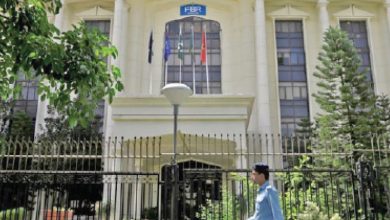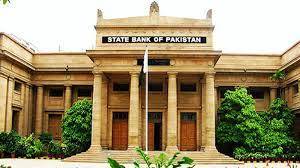C/A surplus hits 9-year high

KARACHI:Pakistan’s current account balance made history by hitting a nine-year high surplus of $619 million in March 2024. This reduced the cumulative current account deficit to $508 million in the first nine months of the fiscal year 2023-24.
The country has maintained a surplus in the current account for the second consecutive month in March and for the third month in the fiscal year, enhancing the nation’s capacity to make international payments smoothly. However, this was achieved through economic engineering and a slowdown in industrial output, resulting in a significant number of job losses and jeopardising the livelihoods of millions.
According to the State Bank of Pakistan’s (SBP) data, the current account surplus improved by 15% to $619 million in March compared to $537 million in the same month of the previous year. This represents a 532% increase compared to the $98 million recorded in the previous month of February.
In their commentaries, Topline Securities CEO Muhammad Sohail and Arif Habib Limited (AHL) Head of Research Tahir Abbas both stated that the current account surplus was achieved after the inflows of workers’ remittances jumped to a two-year high of almost $3 billion in March compared to $2.25 billion in February. Non-resident Pakistanis sent higher funds to their relatives in the homeland to support them in coping with high inflation during Ramazan and the Eid festival.
The current account surplus of $619 million in March is also the third-largest surplus in a month in the entire history of the country, following the single largest surpluses of $981 million in August 2012 and $801 million in February 2015, according to AHL.
The central bank reported that the cumulative current account deficit dropped by 87% to $508 million in the first nine months (July-March) of FY24 from $4.05 billion recorded in the same period of the previous year, improving the health of the country’s external economy.
The bank has maintained its original forecast of recording a current account deficit in the range of 0.5% to 1.5% of GDP in FY24, considering that the import of industrial raw materials would gradually increase in the remaining months of the year.
The significant growth in workers’ remittances allowed commercial banks to extend slightly more financing to traders, increasing the import of goods by 7% to $4.45 billion in March compared to $4.16 billion in the same month of the previous year.
The export of goods improved by 4% to $2.52 billion in the month under review compared to $2.42 billion in the corresponding month of the previous year. However, its impact on the current account balance remained muted considering its smaller size compared to the import volume.
Financial experts believe that the government would continue to manage the trade deficit in the remaining three months of FY24 to achieve a lower current account deficit amid ongoing negotiations for securing a new International Monetary Fund (IMF) loan programme.
However, acquiring an IMF loan programme by the end of June 2024 is a must to maintain economic stability going forward, as the government has targeted similar timelines. Any delay, which seems unlikely, would impact the already stressed economic growth, particularly industrial growth, in the next fiscal year 2024-25.
The central bank has maintained its original projection for economic growth, stating that it would grow in the range of 2-3% in FY24 compared to a contraction of 0.3% in the previous fiscal year 2022-23, which was affected by the 2022 flooding that damaged a significant portion of agricultural output.
This year, however, the major support to the economic turnaround is coming from the agriculture sector, as farmers have reported bumper crops of rice and cotton recently, while the wheat crop is also projected to be a bumper one this year.
FDI hits 21-month high
The flow of foreign direct investment (FDI) into different sectors of the domestic economy hit a 21-month high at $258 million in March, bringing cumulative investment to $1.09 billion in the first nine months of FY24.
The net inflows of FDI improved by 52% to $258 million in March compared to $170 million in the same month of the previous year.
Foreign investment, however, remained 10% lower at $1.09 billion in the nine months (July-March) of FY24 compared to $1.22 billion in the same period of the previous year.
Power, oil and gas exploration, financial business, and petroleum refineries remained the top four recipients of FDIs, receiving amounts ranging from $70 million to $443 million in the first nine months.
Hong Kong, China, the United Kingdom, and the United States remained the top four foreign investors in Pakistan in the nine months, injecting amounts ranging from $100 million to $264 million each.
Published in The Express Tribune, April 23rd, 2024.
Like Business on Facebook, follow @TribuneBiz on Twitter to stay informed and join in the conversation.





